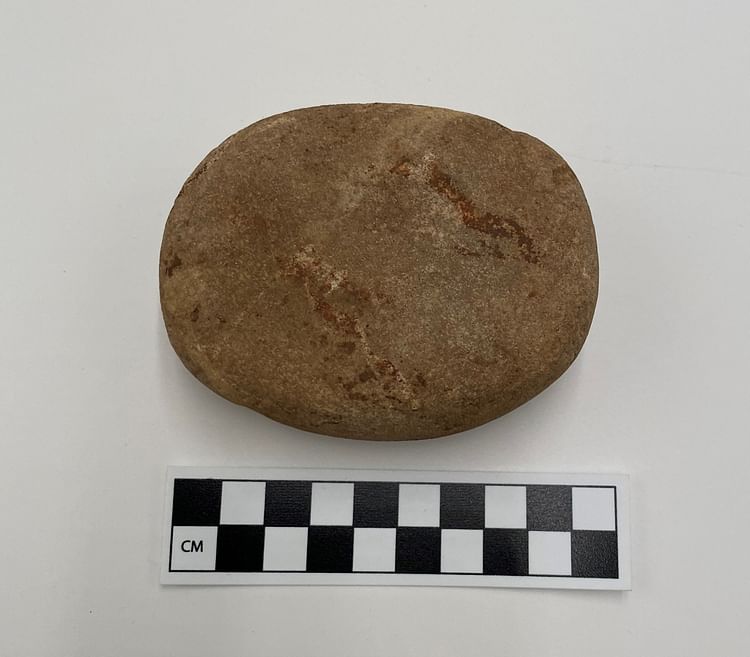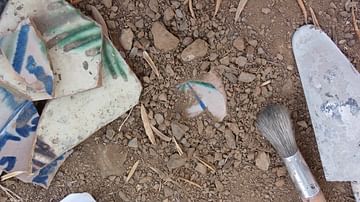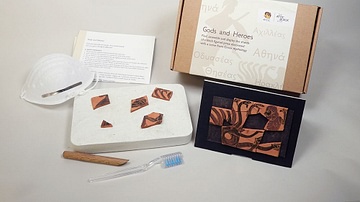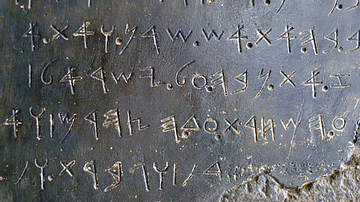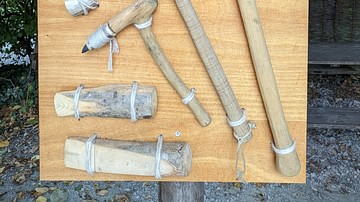Illustration
Nutting stone from the Hatchie River Region in West Tennessee, Early Archaic Period, c. 8,000 BCE.
Hatchie River Museum at the West Tennessee Delta Heritage Center.
Nutting stones such as this were used to harvest mast, or the fruit of a nut, from their shells. A small depression was ground out from the surface of the stone. Then the nut was placed in the depression and struck by a wooden or stone hammer. Because nutting stones are generally heavy and hard to transport, their discovery on prehistoric sites suggests that the indigenous group they come from lived a more sedentary, permanent lifestyle within a settlement or village.
About the Author
Photo Location
This photograph was taken at the following location:
Cite This Work
APA Style
Dunn, A. (2021, December 08). Nutting Stone. World History Encyclopedia. Retrieved from https://www.worldhistory.org/image/14973/nutting-stone/
Chicago Style
Dunn, Adriana. "Nutting Stone." World History Encyclopedia. Last modified December 08, 2021. https://www.worldhistory.org/image/14973/nutting-stone/.
MLA Style
Dunn, Adriana. "Nutting Stone." World History Encyclopedia. World History Encyclopedia, 08 Dec 2021. Web. 31 Oct 2024.

